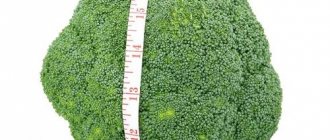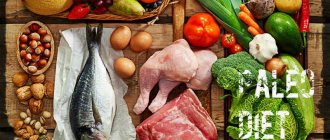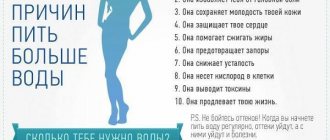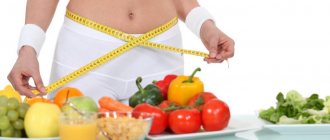Traditionally, low-calorie diets with limited fat intake are used. Dr. Kwasniewski’s nutritional system became a real sensation. This involves switching to fatty protein foods and completely eliminating carbohydrates. One of the most controversial - the fat diet is gaining more and more popularity. Effective weight loss is ensured by high-calorie foods that can be consumed in unlimited quantities. The usual greens and low-fat kefir give way to steak and dairy cream.
Fat diet: basic rules
The fat diet has been developed over 30 years. This is exactly how much it took a Polish general practitioner to study the effect of nutrients on extra pounds. Dr. Kwasniewski successfully proved that in order to gain and lose weight, high-calorie foods should predominate on the menu. These include proteins of animal origin.
The practicing doctor not only invented the original nutritional system, but also used it to treat patients. Thus, thanks to a change in diet in favor of fats, the functions of the cardiovascular and excretory systems were restored. Previously, it was believed that such pathologies, on the contrary, require the exclusion of high-calorie foods. But Kwasniewski’s fat diet refuted the generally accepted dogmas of dietetics, allowing overweight people to lose weight and thin people to gain weight.
General principles:
- the effect of weight reduction occurs due to subcutaneous fat, the intramuscular lipid layer is preserved, allowing you to save energy reserves;
- in the ideal formula for the balance of nutrients in a fatty diet, the prerogative is, of course, fats, followed by parts of proteins and carbohydrates - 3: 1: 0.8;
- The diet is based on foods that provide energy and are easily digestible by the body - proteins and fats of animal origin;
- considers cereals, fruits, and vegetables to be useless for the normal functioning of the body; the content of indigestible fiber and moisture leads to problems with absorption, and therefore to the appearance of extra pounds;
- instead of water-rich vegetables and fruits, the doctor recommends establishing a drinking regime; according to a fatty diet, it is healthier to drink a glass of clean water than to eat cucumber salad;
- the transition lasts about a week, the first days one meal is replaced with high-calorie dishes, then two, and then carbohydrate nutrients are completely replaced;
- A comfortable environment is also important when following a fatty diet; while eating you need to be as relaxed as possible, slowly chew your food, then a half-hour rest follows, and you can start active physical activity only after 2 hours;
- By following Dr. Kwasniewski’s diet, there is no need to adhere to the principles of fractional nutrition, there are no portion restrictions, but you cannot eat more than 250 grams of high-calorie animal products;
- Only 2 meals are recommended - breakfast, lunch, it is better to refuse dinner or reduce the volume;
- the deficiency of minerals and vitamins is replenished by animal by-products - liver, kidneys, lungs, heart;
- There are no snacks; usual breaks can be replaced by drinking tea or drinking regular clean water.
A fatty diet requires monitoring of health indicators. If you eat a diet rich in proteins and fats of animal origin, you need to take a blood test once a week.
Little tricks
There is no need to prepare yourself in any way before starting the diet. If you decide to achieve high-quality shapes of your body, switch to a fatty diet not gradually, but immediately. Breakfasts, lunches and dinners should be held without TV, books and table conversations. It is important to chew each piece thoroughly and recognize the feeling of fullness in time.
If you are distracted by something while eating, there is a high chance of overeating, and if overeating occurs systematically, the stomach will quickly stretch.
Physical activity should be present throughout all days of the diet. But you need to exercise no earlier than 2-3 hours after a meal. The process of losing weight will be more fruitful if you make morning jogging or morning walks in the fresh air your hobby. You can also join a gym or start attending group yoga or Pilates classes.
Permitted and prohibited products
A high-fat diet causes a lot of controversy, especially among nutritionists. But numerous studies have proven its effectiveness in the fight against excess weight. Limiting carbohydrate foods and replacing them with fats helps you lose weight gradually, eliminating sudden weight changes. The absence of glucose helps to launch fat burning processes, reducing volumes.
But still, it will not be possible to completely avoid carbohydrates, agrees the author of the method. Allowable quantity - 50 g. in a day. This volume is sufficient to prevent ketosis, a process in which the body’s own proteins are destroyed. The condition is accompanied by a deterioration in well-being, a decrease in energy resources and cognitive abilities.
The most valuable, according to Kwasniewski's diet, are eggs and dairy products, followed by meat dishes. A fat diet for weight loss requires strict adherence to all recommendations, including diet.
Authorized products:
- meat - pork, lamb, goose, duck, chicken, turkey;
- offal - liver, lungs, heart, kidneys;
- salo;
- fatty sea fish;
- eggs - from 5 to 8 pcs. per day;
- dairy products with a high percentage of fat;
- durum wheat pasta;
- bread toast;
- vegetables, but not more than 50 grams;
- vegetable oils;
- nuts.
For many, the fat diet system is a real example of a celebration of the belly. Dr. Kwasniewski’s innovations did not affect drinks. Alcohol, sweet soda, juices, and fruit drinks are traditionally prohibited. The drinking regime involves an unlimited amount of water; you can also drink herbal teas, coffee, and chicory.
Prohibited products:
- legumes;
- seafood;
- porridge;
- bakery products, sweet pastries;
- fruits;
- confectionery;
- alcohol.
Despite the name, the fat diet involves carbohydrates in the diet, but in limited quantities. Preference is given to potatoes, pasta, you can also use all types of vegetables, but no more than one per day.
LiveInternetLiveInternet
Quote from Celestialom
Read in full In your quotation book or community!
CONVERSATIONS WITH PROFESSOR IVANCHENKO FAT AGAINST SCLEROSIS
CONVERSATIONS WITH PROFESSOR IVANCHENKO FAT AGAINST SCLEROSIS
It is possible that after reading the previous conversation with Professor Ivanchenko, “Fat vs. Obesity,” about the methods of treating a number of degenerative diseases according to the method of the Polish doctor Jan Kwasniewski, our readers went completely crazy. Of course, for how many years have we been explaining to citizens that fats, especially animals, are almost enemy number one, and then a little-known Polish doctor appears and turns the supposed truths on their heads.
Moreover, Kwasniewski’s methods are recognized not only in Poland itself, but also in a number of civilized countries, including America, where the fight against fat consumption to this day is a life-or-death struggle. In any case, Kwasniewski’s books, as soon as they appear on the shelves, are blown away like the wind. Here it is necessary to take into account one circumstance: we are talking about the treatment of exclusively painful conditions. Painful! This is the first thing. And, secondly, in medicine there are still no such truths before which one should unconditionally kneel. Many theses that seemed unshakable are being revised, especially recently. And it may very well be that Kwasniewski’s method simply gave reason to reconsider some of our old ideas about the role of cholesterol and its amount in the body. In any case, it became necessary to explain certain provisions of Kwasniewski’s methodology a little more deeply. And here we cannot do without the help of Valery Andreevich Ivanchenko.
- So, Valery Andreevich, it was your fault that something like a bomb exploded in the messenger. Are you going to make excuses?
- Without any doubt!
- In this case, explain why a fatty diet radically helps with such various diseases as atherosclerosis, diabetes, asthma, allergies, psoriasis, multiple sclerosis, obesity, coronary heart disease, hypertension, cerebrovascular accident, Raynaud's disease (obliterating endarteritis , stomach ulcers, intestinal diseases - entercolitis, cirrhosis of the liver, osteoarthrosis (salt deposition), osteochondrosis of the spine and joints, neurasthenia, ankylosing spondylitis, etc. And in general, don’t you have a suspicion that all of this is some kind of nonsense?!
“I personally don’t have such a suspicion.” The problem of treating such diseases has not arisen today or yesterday, but for a long time. The fact is that what is common to all of them is a violation of fat metabolism, leading to deterioration of blood circulation in the weakest organs. Judge for yourself: in atherosclerosis and other sclerotic phenomena - hypertension, angina, endarteritis, migraines - cholesterol deposits on the walls of blood vessels are to blame. The same diabetes is a typical metabolic disease with the accumulation of end products of fat metabolism - ketone bodies (acetone and the like). The lungs are one of the main organs where fats are oxidized. In asthma and allergies, this process is disrupted. Toxic fatty acid products (mediators, allergy mediators) accumulate, promoting inflammation and tissue swelling. Psoriasis, multiple sclerosis, ankylosing spondylitis - all these are auto-allergic diseases in which the fatty layer of cell membranes breaks down. Strengthening weak organs with a fatty diet gives remission, and in many cases even complete relief from the disease. Official medicine considers these diseases to be incurable, and the patient in such cases most often faces disability. Meanwhile, in the Kwasniewski sanatorium, the above-mentioned ailments are dealt with quite successfully. Recently, treatment with a fatty diet has been tested in our center. The results are very encouraging, even in cases where we were previously powerless.
- I want to believe you. But, excuse me, if a fat diet works such miracles, then really no one thought of this before Kwasniewski?
- Well, why?! We figured it out. Just remember the folk recipes for treating various pulmonary diseases. In most of them, fat is an integral component. In the 70s, a fat diet was proposed by American doctors to treat multiple sclerosis. Again, it has long been noted that with abundant consumption of fat and significant restriction of carbohydrates, blood pressure decreases in hypertensive patients. Finally, in Poland, the so-called Sippa diet for stomach ulcers has long been popular. It consists of taking up to 0.5 liters of 30 percent sour cream daily until complete recovery. Patients sit on sour cream for a long time and eventually the ulcer disappears, and the scar after it dissolves. I think it was this diet that served as the main guide for Kwasniewski.
“But Kwasniewski’s method means some kind of revolution in medicine.” It requires a revision of many of our views on the treatment of the so-called diseases of civilization.
“That’s exactly what Kvasnevokiy insists on.” Let's consider the situation using the example of atherosclerosis. Now doctors “treat” it by reducing high cholesterol levels with chemical drugs. But atherosclerosis is a metabolic disease in which the liver begins to produce more and more cholesterol of a special form. It is this cholesterol that is deposited on the walls of blood vessels. Cholesterol contained in dietary fats does not have such an effect. According to Kwasniewski - and many experts agree with this today - “bad” cholesterol is formed from carbohydrates. Moreover, the more this fuel for the liver is in the diet. I mean first of all the sweet enemies of humanity: candy, sugar, white bread, cookies and other baked goods. By the way, the same thing happens in cancer, when the liver excessively produces cholesterol, which is necessary for the construction of rapidly growing cancer cells. By adding carbohydrates to our diet, we feed cancer cells.
- Fantastic! I’m not sure that Nikolai Shevchenko, the author of the method of treating cancer with a mixture of 40-proof vodka and unrefined sunflower oil, knew about this circumstance. Nevertheless, he introduced a strict ban on the consumption of carbohydrates.
- That's right. According to Kwasniewski, none of the thousands of his patients who switched to a high-fat diet since the early 80s developed cancer. And here one more argument can be made: in response to excess carbohydrates, excess insulin is formed in the pancreas. There are very serious suspicions that insulin stimulates tumor growth. On the contrary, a fat diet stops it. The fact is that tumor cells cannot absorb energy from fat. To do this they require carbohydrates. For example, the following fact is known: if you place cancer cells in the yolk of a chicken egg, they die literally within a few hours . Normal cells live several times longer - they absorb surrounding fat. That is, Kwasniewski’s theory is extremely simple: if you don’t want to develop atherosclerosis and cancer, you need to take all measures to avoid excess carbohydrates, which are abundant in the food of modern people.
— Yes, but you wouldn’t advise our readers to create a menu based solely on fat.
- No. This is also harmful. Moreover, I remind you once again that we are talking about the treatment of painful conditions. To combat them, it is best to follow the “golden” diet, as Kwasniewski calls it, the proportion of proteins, fats and carbohydrates 1: 2.5-3.5: 0.3-0.5. This ratio inhibits the processes of fermentation and putrefaction in the intestines, and this is the key to solving the problems of enterocolitis. Limiting carbohydrates also stops their stimulation of the nervous system - hence the benefits of a fatty diet for neurasthenia and insomnia.
— I think we can finish with the rationale for the diet. It is, of course, somewhat superficial and, perhaps, will therefore give rise to other specialists’ objections. But facts, as they say, are stubborn things. The only thing I would like to ask is what to do for our readers who are deprived of medical care? Is it so easy to just take it and, abandoning previous eating patterns, move on to new ways? How difficult is it to adapt to a new diet?
— Changing your eating pattern is a very serious stress load for the body. Therefore, I repeat once again - only illness can cause a change in habits. Nevertheless, in patients, somewhere between the 6th and 10th days of using the diet, so-called ketone bodies (acetone and the like) appear in the urine. If at this time the patient breathes on you, you can smell the sweet smell of acetone. That is, the blood becomes acidified, weakness and fatigue appear, and patients freeze. Therefore, you need to limit physical activity, stay warm, and exclude acidifying foods—meat, fish, nuts—from food for a while. That is, proteins. It is better to add alkalizing foods, such as vegetables and fruits. I emphasize: for a short time. If you have liver and kidney failure, you need to approach a fatty diet even more carefully. In case of kidney diseases, especially chronic nephritis, in the initial period of switching to a diet, the level of urea and creotine in the blood (nitrogenous waste) sometimes increases. Such patients can switch to a fatty diet only in a special hospital, but Russia does not yet have its own Kwasniewski. Based on all these considerations, I do not recommend a fat diet for healthy people. Although Kwasniewski himself considers it optimal for people of all ages - from infants to the elderly. I think the author here tends to exaggerate the capabilities of his brainchild. Kwasniewski, for example, uses his diet for patients after a heart attack and stroke in the early period. I wouldn't do that. Another article is chronicles. In my practice in the USA, there was a case of extremely successful healing of a patient with chronic cerebral circulatory failure, severe headaches and hypertension (240/150 mm r/s). Four days after starting the diet, the pain subsided for the first time in eight years, and the pressure dropped to 170/130. Previously, the patient was offered surgery to replace cerebral vessels three times, considering the changes irreversible. Now the patient is completely healthy. By the way, her allergies, insomnia and angina disappeared, and her weight decreased by 24 kg. — Which product is considered the most optimal in a fat diet?
- Of course, eggs. Kwasniewski himself eats up to six eggs daily.
- Lord, what a nightmare.
- Nothing terrible. Eggs, from a biochemical point of view, are one of the most digestible foods.
“But nutritionists recommend 2-3 eggs a week, based on the fact that yolks are the main ingredient, which increases blood cholesterol levels.
-This is true. But it is the yolks that also contain a huge amount of anti-sclerotic substances - cholines, iodine, sulfhydryl compounds and others. Indeed, in a one-sided study, yolks increased blood cholesterol levels by almost 4.5 times. Based on this, strict recommendations emerged regarding eggs eaten per week. Meanwhile, Jan Kwasniewski's patients have been consuming up to 12 eggs a day for many years and still remain healthy. At our center, we examined cholesterol levels in patients eating a lot of eggs and on a high-fat diet. Their cholesterol was normal. I'll give you a funny counter-argument. It has been discovered that African elephants suffer from something similar to human atherosclerosis, but they only eat grass.
- So, there is no need to be afraid of sclerosis with a fatty diet.
— If you consume a lot of fats and few carbohydrates, that is, in the “golden” ratio, then atherosclerosis does not develop. On the contrary, atherosclerotic plaques are reabsorbed.
- But until now it was believed that this was an irreversible process.
— What does irreversible mean? Take therapeutic fasting. It also promotes the resorption of atherosclerotic plaques. Another thing is that during the recovery period everything gradually returns to normal. This does not happen with a fat diet. I had a patient A. Malinina from Belgorod. She was constantly freezing. Even in summer her fingers were like ice. Trophic ulcers on the legs. A fatty diet and magnetic resonance therapy practically relieved her of the cold, the ulcers healed, and the skin of her legs restored its natural color. In those cases when she violated the diet, the symptoms returned again, and now Malinina is constantly on a fat diet—there is no turning back.
— That is, if you “go on” a fat diet, then it is no longer possible to return to a regular one?
- What does a fat diet have to do with it? If you practice a certain way of eating—let's call it a diet—and leaving it gives you unpleasant sensations, you will return to your original position, won't you? Same with a fat diet.
- Fine. I decided to turn to a fat diet. Give at least an approximate diet for several days.
- Why exemplary? Let's take it straight from Kwasniewski. So, first day. Breakfast: scrambled eggs from two eggs in butter 30 grams), hot milk (200 mg), a piece of bread with butter (30 grams). Lunch: fried carp (200 g) in egg and breadcrumbs (20 g), potatoes (100 g), fried in oil (20 g), 30% sour cream (200 g), whipped with strawberries (100 g), juice vegetable (2 tablespoons of juice per glass of water). Dinner: cottage cheese pancakes (100 g), tea with 1 slice of lemon. Second day. Breakfast: salad of two eggs with fatty fish (300 g) with mayonnaise (“under a fur coat”), butter 20 g, a slice of bread, tea. Lunch: pork leg borscht (200 g), sauerkraut salad (200 g), potatoes (no more than 100 g), fried in oil (20 g), vegetable juice (2 tablespoons per glass of water). Dinner: milk soup (200 mg milk) with two eggs and butter (50 g). The third day. Breakfast: fatty sausage (100 g) in the form of two sandwiches with butter (30 g) and two pieces of bread, tea. Lunch: beef goulash (250 g) with egg and cheese dumplings (100 g), vegetable juice (2 tablespoons per glass of water). Dinner: 200 g of jellied pork legs, a piece of bread, butter (30 g), tea.
— How would you comment on this diet from the standpoint of naturopathy?
— Well, Kwasniewski’s menu is quite varied. The dishes, of course, taste good and quickly fill you up. However, as a naturopathic doctor, I cannot help but note a number of disadvantages. Firstly, an abundance of fried foods. I do not recommend fried foods to my patients. Secondly, the Polish doctor completely ignores vegetables, but they promote emulsification and better absorption of fats. Therefore, if you are going to eat a sandwich with 20 grams of butter, then, in my opinion, it is better with a green layer of lettuce, celery or spinach. Third, Kwasniewski ignores the combination of foods accepted by all naturopaths. That is, in any case, the diet cannot be called naturopathic. However, no matter how it looks, practice remains the criterion. And she proved the correctness of the Kwasniewski diet for many diseases. I will support this thesis with one more example, the like of which I have not seen from any of my colleagues. Recently, Kwasniewski in Poznan accidentally came face to face with his former patient, who switched to a fat diet back in 1987. In fact, it was the patient who recognized Kwasniewski. The latter, before applying the diet, weighed 155 kilograms and suffered from a lot of ailments. Now he weighs 75, has beautiful skin without wrinkles, looks great, is witty, and looks to be about fifty. Meanwhile, the rosy-cheeked, robust man is already over 80. After this example, one can argue as much as one wants about whether Kwasniewski is right or wrong.
Anatoly KORSHUNOV.
Jan Kwasniewski Post Series:
Part 1 - Kwasniewski vs. Atkins. Part 2 - Optimal nutrition. Jan Kwasniewski. (Translation from the English-language site) Part 3 - Letter from patient Jan Kwasniewski (who is treated with a high-fat diet) Part 4 - THE BEST DIET - MEAT AND LAD. Eat fats if you want to lose weight, advises Dr. Kwasniewski Part 5 - CONVERSATIONS WITH PROFESSOR IVANCHENKO FAT AGAINST SCLEROSIS
Fat diet for weight loss: menu for the week
The effectiveness of the nutrition system depends on a properly formulated diet and the inclusion of the author’s basic recommendations. To lose weight, it is not enough to eat only high-calorie proteins; you need to find a balance for comfortable weight loss.
Sample menu for the week
Monday:
- breakfast - omelet with homemade sausage, toast, coffee with cream;
- lunch - boiled potatoes with sour cream, chicken chop in breadcrumbs;
- dinner - curd mousse with cream.
Tuesday:
- breakfast - scrambled eggs, pork chops, chamomile tea;
- lunch - carbonara pasta with parmesan, fried bacon slices;
- dinner - duck breast, lettuce.
Wednesday:
- breakfast - cottage cheese dumplings with sour cream, coffee with cream;
- lunch - pork chop in cheese sauce, cucumber;
- dinner - fermented baked milk with toast.
Thursday:
- breakfast - scrambled eggs and bacon, herbal tea with toast and peanut butter;
- lunch - potatoes with butter, stewed pork with tomatoes;
- dinner - cottage cheese casserole with cream.
Friday:
- breakfast - homemade sausages, cucumber, herbal tea;
- lunch - pork liver cutlets, Bolognese pasta;
- dinner - cheesecakes with cream sauce;
Saturday:
- breakfast - scrambled eggs with bacon, yogurt with flax seeds;
- lunch - light with cheese sauce
- dinner - grilled fish, pumpkin puree.
Resurrection:
- breakfast - egg rolls stuffed with minced turkey, coffee with cream;
- lunch - pork kidney pancakes with cream sauce, baked potatoes;
- dinner - cottage cheese pancakes with peanut butter.
Fat diet for weight loss: recipes for the menu
You can find many nutritious recipes that correspond to Kwasniewski’s fat diet menu for weight loss.
Pasta carbonara
Components:
- 200 gr. spaghetti;
- 300 gr. bacon;
- 50 ml cream;
- 50 gr. parmesan cheese;
- garlic clove;
- salt pepper.
Boil the spaghetti in salted water until half cooked, drain the liquid. Heat olive oil in a frying pan, fry chopped garlic. Slice the bacon, fry with garlic until golden brown. Separately, beat the yolks with cream, finely grate the Parmesan. Transfer the pasta to the frying pan, after 2 minutes add the yolks with cream, Parmesan, and keep on the fire for another 3 minutes.
Pancakes with curd
Components:
- 3 eggs;
- 70 gr. starch;
- 100 ml milk;
- 100 gr. cottage cheese;
- 50 ml cream;
- 15 ml olive oil;
- 10 gr. vanilla;
- 2 tablets of sugar substitute;
- a pinch of salt.
Replace the dough with eggs, starch, milk, and salt. Make the filling from cottage cheese, cream, add vanilla and powdered sweetener. Fry small pancakes in olive oil, while still warm, fill with cottage cheese and form into rolls. You can serve with sour cream or yogurt.
Goulash from the lungs
Components:
- 500 gr. pork lungs;
- 100 gr. bacon;
- 100 ml tomato juice;
- salt, pepper, bay leaf.
Wash the lungs, cut into small pieces, remove the tubes. Cook over low heat for 2 hours. Then place the lungs on a paper towel, chop the bacon, and fry in a hot frying pan. Add the lungs and cook for another half hour. Place in a saucepan, pour in tomato, add salt, pepper and bay leaf. Simmer for another 20 minutes.
Liver cutlets
Components:
- 1 kg pork liver;
- 300 gr. bacon;
- 2 eggs;
- 50 gr. starch;
- 1 liter of milk;
- 20 gr. butter;
- salt, pepper to taste.
Rinse the liver, pour milk and leave for an hour. Then grind in a blender along with the bacon. Add eggs and starch to the minced meat. Mix well, add salt and pepper, and form into small cutlets. Fry in butter for 5-7 minutes over low heat on both sides.
Quitting the diet
A unique nutritional system involves changes in metabolic processes and restructuring of biochemical processes. To restore metabolism without health consequences, you should take into account the features of exiting a fatty diet:
- in the first 2 weeks the menu is enriched with cereals and vegetables, can be used in 1-2 meals;
- on the twentieth day fruits appear in the diet; it is recommended to consume them in the first half of the day;
- after a month, a minimum amount of simple carbohydrates is allowed; in order to maintain weight, you need to include it in your diet no more than 2 times a week.
This is optimal nutrition. Optimal diet
Compliance with the diet plays an important role in the process of losing weight, and if you want to build muscle mass, and when deciding to switch to the right way of eating. Let's try to figure out what an optimal diet is and why its adherence is so important for the human body.
No matter what modern technologies enter our lives, the human body still remains one of the biggest secrets and mysteries. Scientists have achieved partial exploration of space, the creation of capacious storage of terabytes of information, but they have not been able to slow down the aging process or force our body to obey a convenient schedule.
All life support systems work properly only if the rules are strictly followed; various chemical reactions constantly occur in the body, hormones and antibodies are continuously produced, old cells are destroyed and new cells are formed. But the correct course of all these processes is possible only with the right approach to organizing your nutrition.
The diet, which is optimal for organizing the proper functioning of the hormonal, metabolic, regenerative and other systems, includes: the number of meals, the quality, organic and chemical composition of products, compliance with the necessary standards of preparation and proportions. This approach is due to the protective functions of the body, which immediately respond to any deterioration or discrepancy with the rhythm laid down by nature. The sooner you switch to the right diet, the more effectively you can achieve any goals you set for your body.
Start by organizing your meals quantitatively. It is unacceptable to eat once or twice a day. In this case, the body’s defense system triggers a fat accumulation mode, and the functioning of the hormonal system and the gastrointestinal tract is disrupted. One meal a day is the direct and shortest path to burning muscle mass and storing fat. The optimal number of doses is considered to be 4-5 times a day. In this case, you will not have time to get hungry, eat too much, metabolic processes will normalize and metabolism will accelerate.
Pay special attention to the process of eating. It is advisable to allocate at least 10-12 minutes for each meal, decorate the dish beautifully and, if possible, exclude all distractions (TV, tablet, computer). The aesthetic appearance of the food you eat has a beneficial effect on your mood and promotes its quality assimilation. At first glance, this sounds funny, but note that after eating a beautifully presented dish, for example, cottage cheese casserole with banana and chocolate or beef lula with different types of rice, you will feel more satisfied than eating shawarma in the subway or french fries at I run to the office.
And of course, it is very important to calculate the qualitative composition of each dish. Depending on the goal, it is necessary to regulate the content of proteins, fats and carbohydrates. For such calculations, you can use special tables and applications.
With the help of a properly organized diet, you can quickly achieve weight normalization, increase the effectiveness of training and generally improve your well-being.
Fat diet for weight loss: advantages and disadvantages
When using a fatty protein diet, it is important to consider its features, pros and cons. The controversial system requires compliance with basic rules and recommendations.
Advantages:
- gradual weight loss;
- lack of feeling of hunger;
- energy boost.
Flaws:
- an unbalanced menu can only be used if health indicators correspond to the norm;
- designed for a long period of time, the author recommends sticking to a high-calorie diet throughout your life;
- a fatty diet requires medical supervision and regular testing;
- there is a deterioration in health in the presence of chronic pathologies;
- changes in metabolic processes, slowdown of metabolism;
- a monotonous diet causes rapid taste satiety;
- risks of developing vitamin deficiency, increasing cholesterol levels;
- decreased cognitive abilities.
Contraindications:
- individual intolerance to ingredients;
- oncology;
- pregnancy, lactation;
- pathologies of the cardiovascular system;
- age restrictions - under 18, over 60 years old;
- liver and kidney diseases;
- postoperative period.











